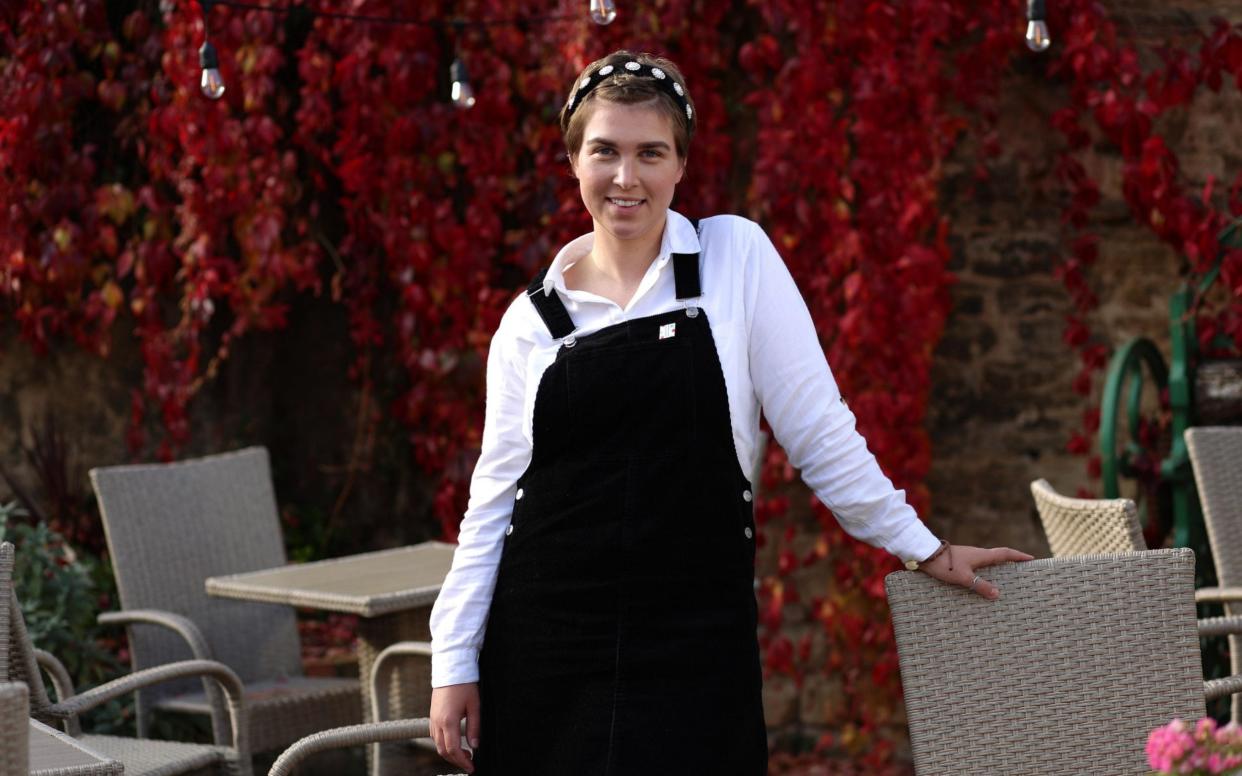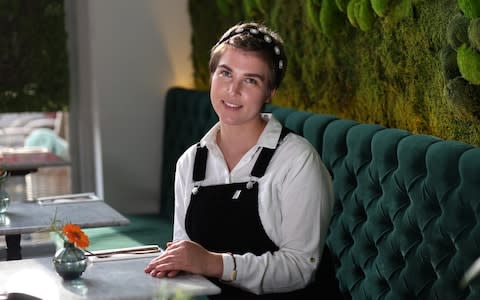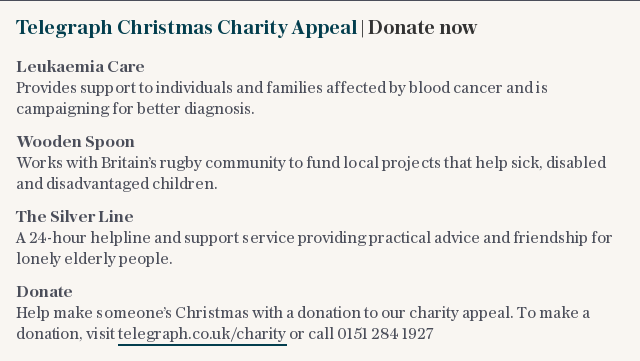'Strangers can help unlock your mental strength': how online communities give cancer patients courage


Hannah Mahoney was diagnosed with leukaemia just before Christmas last year. Now in remission, following her last round of chemotherapy in April, she is approaching her 28th birthday on Wednesday, and planning a new career as a trainee technician with the East Midlands Ambulance Service.
“Cancer woke me up to what’s important,” she says – and connecting with other people on social media who have been diagnosed with blood cancer has helped. “You never think you’ll be in hospital at Christmas. At first, I found it hard to go online. Everyone was having a great time, or moaning about the turkey – and that really got to me,” she says.
Having been bewildered by abnormal symptoms before her diagnosis of acute promyelocytic leukaemia (APL) – a rare, aggressive form that affects blood-producing cells in the bone marrow, but for which effective treatment is available – she saw how crucial it was to spot the signs early, and wanted to share her experiences so that something positive might come from them.
“APL is now easily curable with immediate and intensive treatment, but early death before treatment starts, or in the first days of treatment, still remains a problem,” she explains.
While Mahoney initially found it difficult to engage with social media, she has since used platforms such as Twitter and Instagram to raise awareness about the symptoms and realities of her disease by posting articles and research alongside personal anecdotes. In one video, she shares what it’s like to hand-wash a wig.
Given that, according to recent polls, 84 per cent of Britons can’t confidently name the symptoms of blood cancer, and 19 per cent of patients were treated for something else by their GP before being diagnosed, encouraging patients and GPs to #SpotLeukaemia is a tangible way to help.
The Telegraph’s Christmas Charity Appeal is this year supporting Leukaemia Care (along with The Silver Line and Wooden Spoon), which works to support people like Mahoney, and to raise awareness of the disease.

Mahoney first encountered unusual symptoms when she hit her leg while horse riding. An unusually nasty, visible bruise appeared, and didn’t go away. A week or two into December 2018, she discovered more bruises, and couldn’t understand why they weren’t healing.
“I thought going to the doctors for bruising was a bit pathetic. I had no idea that they were symptoms of something more serious. I woke up on a Friday morning with bleeding gums. That weekend, I had a sore throat and a painful ulcer on the roof of my mouth.
“On the Tuesday, I left work to revise for an exam and, as soon as I sat down, felt an agonising pain in my groin and my knees. I had to go to bed, and sent my mum to the pharmacy with a long list of over-the-counter remedies for all the weird things that were happening.
“At 3am, I decided something wasn’t right and started googling – which I know you’re never meant to do – and the entire results page suggested leukaemia. I woke up the next day with five new bruises on my stomach. That was scary, because I had no idea how they'd got there.”

It was only then that Mahoney booked an appointment with her GP, who squeezed her in for a blood test. On Friday evening, a week after noticing her bleeding gums, Mahoney received a voicemail to say she had an abnormal result and was sent to Northampton hospital. Two hours later, she received her diagnosis. If she hadn't been admitted on Friday 14 December 2018, then she might not be here today.
The online community and charities such as Leukaemia Care offered invaluable support as she navigated the side effects of gruelling rounds of chemotherapy. “There’s an active cancer community online, but it’s like Hogwart’s – people don’t know it’s out there. When you receive a cancer diagnosis, you can feel alone and isolated, but there are people who have been through something similar, and they’re always there to offer tips and encouragement,” she says.
For Mahoney, it was sharing the little things – like washing down pills with Yazoo vanilla milk – that made a difference. When we meet, she has just pulled a muscle – a frequent occurrence which, she says, connections online have assured her is a common side effect of treatment, due to muscle atrophy.

“There are lots of accounts with both a small and big following that have helped me, and continue to do so. But it’s the smaller accounts, people on Twitter who have had treatment for blood cancer, too, that offer the most support. You can find people using the search tool and relevant hashtags such as #BloodCancer, #LifeAfterCancer – whereas Instagram is more for sharing visual content and videos, seeing what others are up to, and how they’re bossing the big C.”
Bloggers such as Georgie Swallow (@georgieeswallow on Instagram), who is navigating her way through a relapse of Hodgkin lymphoma – and has shared photographs of her painting her face, using fancy dress as a way to stay smiling through chemo – have helped Mahoney by sharing their tips for optimism.
“She’s hilarious, good at putting her feelings into words, and makes the best of a bad situation. Strangers can help you to unlock so much mental strength.” For Mahoney, riding a semi-retired horse, Oscar, was a key component of recovery after her last round of chemo, allowing her to rebuild her strength and lift the fog of “chemo brain”.
“The first time was only a little plod, but I was so happy. I post a lot of pictures of horses online and I was so pleased when it inspired a friend, who has also had chemo, to try horse riding.”
Mahoney is also keen to encourage people online to give blood, supporting NHS Blood Donation. During intensive chemotherapy, she required regular transfusions because her blood didn’t contain enough healthy blood cells. “People have seen my posts, and, as a result, have given blood and shared a photo online. It’s a small good to come of what happened. What those people have done is amazing – it will truly make a difference.”
Another reason Mahoney feels it’s vital for her to be vocal about her experiences is to dispel the stigma surrounding cancer. Often, the people she encountered assumed it was a fatal disease, or found it difficult to talk to her. “So many people don’t know how to approach it, and think you’re going to pop your clogs,” she explains.
Her posts are peppered with humour: she describes hospital as “hozzy”, and refers to people who have never been through cancer as “cancer muggles”. “Leukaemia Care is great at communicating with people on social media; the language and the emojis are relatable, not dry and formal. It makes it seem less scary. Even its pens, that look like blood syringes, are awesome – they’re a great way to promote awareness of how to spot leukaemia.
"I’d urge anyone not to be scared to talk to someone with cancer – just talk to them like a normal person, be sarcastic and stupid, have a laugh. You can still have serious moments – but don’t freak out at the word cancer.”
To make a donation to our Christmas charity appeal, visit telegraph.co.uk/charity or call 0151 284 1927


